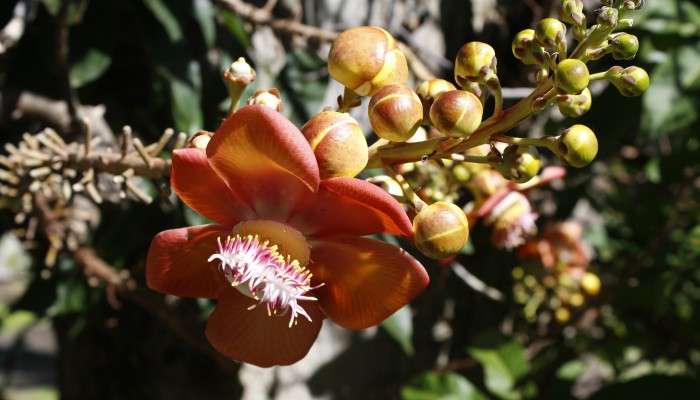The oldest Botanical Gardens in the western hemisphere lie on the outskirts of Kingstown, St Vincent, in the Windward isles of the West Indies – and what a gem they are. As the ironwork above the entrance declares, the gardens were founded in 1765. The original ambition of Robert Melville, the then Governor in Chief of the Windward Isles, was to establish a horticultural research station for ...[Read More]
Remote sensing of volcanoes and volcanic processes
A major goal of volcanological science is understand the processes that underlie volcanic activity, and to use this understanding to help to reduce volcanic risk. Advances in instruments and techniques mean that scientists can now measure many different aspects of the behaviour of restless or active volcanoes, including seismicity (to detect magma movement at depth, for example); deformation (oft ...[Read More]
Friday Field Photo – Soufrière Hills Volcano, Montserrat in 1998
View of the steaming dome of the Soufrière Hills Volcano (SHV), Montserrat, in February 1998, just at the beginning of the first pause in the eruption which began in 1995. Since that time, the volcano has gone through another 4 cycles of slow lava extrusion,along with a number of major episodes of dome collapse. The volcano remains active, and closely monitored by the Montserrat Volcano Observator ...[Read More]
Friday Field Photo: Mocho Choshuenco volcano, Chile
Volcanoes Under the Ice
A fascinating story has emerged this week from a paper in Nature Geoscience by Amanda Lough and co-workers (Lough et al., 2013), on the discovery of a new volcano deep beneath the ice of the Western Antarctic Ice Sheet (WAIS). The discovery is partly a story of scientists looking in a place where no-one had looked before; this case, using a network of seismometers, as a part of POLENET/ANET ̵ ...[Read More]
Friday Field Photo – Volcanic Crater Lake, near Sollipulli, Chile
Friday Field Photos: Eruptions at Lokon-Empung volcano, Indonesia
This week I am at a workshop near the twin-peaked volcano Lokon-Empung, in Sulawesi, Indonesia. True to form (it is the most active volcano in Sulawesi), Lokon has been rather active, with fairly frequent small explosions forming some small but dramatic ash plumes. The active vent is not at the summits of either Lokon, or Empung, but instead at the crater called Tompualan, which lies in the saddle ...[Read More]
One year of volcanicdegassing
One year has passed since I first wrote a post for this occasional blog. Now, 12 months, 22 posts and 7500 page views later, here’s a quick look back. For me, this has been a way of using some of my back catalogue of field photographs, of fleshing out a bit of context around papers I have been working on, and adding a little commentary on some more topical aspects. I am pleased with the results so ...[Read More]
Friday Field Photos: the Southern Volcanic Zone of Chile
If you are ever in Chile and have the chance to take a mid-morning flight south from Santiago towards Puerto Montt or Concepcion, make sure you try and book a window seat on the left hand side of the plane. Once the early morning cloud has cleared, you could be in for a treat as you fly along the ‘volcanic front’, with spectacular views of Chile’s brooding volcanoes popping up f ...[Read More]
August Anniversaries: the eruption of Krakatoa
August 27th marks the anniversary of the culmination of the great eruption of Krakatoa (or Krakatau) in Indonesia in 1883. This devastating eruption has become the archetype of a volcanic catastrophe, even though it was a geologically modest example of a ‘caldera forming’ event. The eruption of Krakatoa quickly made the headlines around the world, in part because newly installed unders ...[Read More]




